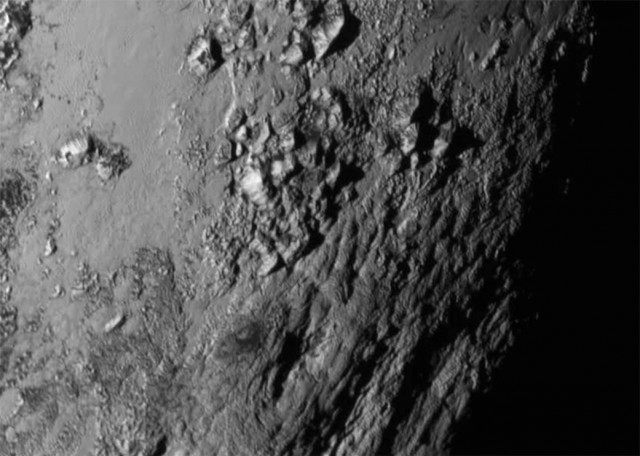Fifty years after the US space program set out to explore all the planets in our solar system, the New Horizons probe came within 7,800 miles of Pluto, giving us the first amazing and surprising images of an ice world with unexplained geologic activity.
The probe became the first man-made device to reach the outermost body of our solar system.
The clearest photos ever taken of Pluto reveal a planet that has surprised scientists in a number of ways and overturned some long-held theories about the cold planet and its moons.
Several things have upended previous ideas. For one, the orb is at least 50 miles bigger than previously thought. But most surprising to scientists was the fact that Pluto exhibits geologic activity that isn’t explained under the previous theories scientists held, not just about Pluto but about how other planets might work.
NASA scientists were surprised with the great mountains as high as Earth’s Rockies, mountains that formed only about 100 million years ago. With the estimated 4.56-billion-year age of the solar system, these mountains may be some of the youngest formations in our solar system. And they may still be in the process of building.
On Wednesday, Alan Stern, New Horizons’s principal investigator, said, “We now have an isolated small planet that is showing activity after 4.5 billion years. It’s going to send a lot of geophysicists back to the drawing board.”
Pluto’s geologic activity has also surprised scientists because, unlike other bodies in the solar system, Pluto cannot be heated by other planets. So, scientists are left stumped over how these mountains have been formed.
“Pluto didn’t turn out to be a relatively featureless planet with a foggy nitrogen rich atmosphere as was expected. It has turned out to be a complex and interesting world. For the very first time we know that,” John Grunsfeld, NASA’s associate administrator for science, said.
In the end, New Horizons proved that Pluto is not a featureless ball of ice, but a planet rich with texture and geologic activity, proving that we still have an awful lot to learn about our own solar neighborhood.
Follow Warner Todd Huston on Twitter @warnerthuston, or email the author at igcolonel@hotmail.com.

COMMENTS
Please let us know if you're having issues with commenting.